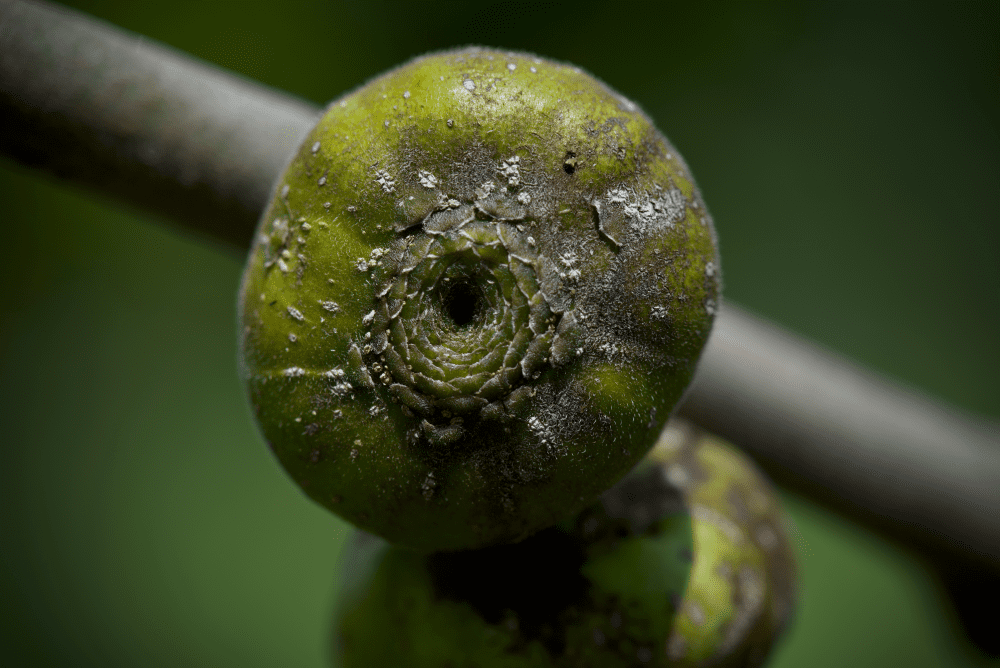If you like figs then it could be argued that you have a taste for wasps. The relationship between figs and fig wasps is arguably the most interdependent pollination symbiosis known to science, and it ends with a lot of dead wasps going missing inside figs.
By the time you come to eat the fig there probably won’t be any sign of them, so where do the wasps go? Well, the fruit sort of eats them.
The fig wasp life cycle
Fig wasps have a fascinating life cycle that involves invasions, incest, and insectivorous plants. It’s an example of obligate mutualism, as neither figs nor their namesake wasps can complete their life cycle without the other. However, as is often the way in group projects, it works out better for some than others.
The love affair between figs and wasps is thought to have been going for 60 million years, and it all begins with a female wasp getting covered in pollen. She then crawls inside an immature fruit through a hole called an ostiole that you can see at the bottom of a fig.

The floral butt through which a female fig wasp climbs. Image credit: Somboon Kamtaeja / Shutterstock.com
She lays her eggs inside some of the flowers tucked within, simultaneously pollinating the fig. The flowers stuffed with eggs form gall-like ovaries in which the wasp larvae develop while the wasp-free flowers go on to become seeds inside the mature fruit.
Wingless male fig wasps are the first to crawl out into the fig’s interior and they’ll battle with each other between fertilizing their sisters(!) who are still trapped in their galls. Battles can be ruthless with some wasps getting beheaded by the mandibles of other males.
Females then emerge from their galls already mated, but they’re able to leave the fig thanks to escape tunnels dug by the wingless male wasps. They pick up a coating of male fig pollen on their way out, and the life cycle begins again.
Where do the dead wasps in figs go?
Trapped inside the fig without a wing or a prayer, the males die and never leave the fruit in which they hatched. But they won’t turn up inside your fancy fig starter (provided it’s ripe) as the fig releases an enzyme known as ficin that breaks down their corpses so they can be absorbed into the fruit.
There are also some fig varieties that don’t need wasp-facilitated fertilization, so in answer to the question…
Are you eating wasps when you eat figs?
In the case of fig wasps: yes at a push, but mostly no. Some people like to say that the crunchy bits in a fig are the tiny fig wasps, but this isn’t true. Those are the fig seeds (remember those wasp-larvae-free flowers?) and they’re perfectly fine to eat along with the delicious fleshy fruit.
Other wasp species might feast on a fig that’s ruptured, and could possibly then die mid-meal. You’ll just have to use your eyes for that one.
While it’s fun to tease your biggest-fig-fan friends that they’re unknowingly eating wasps, the fact is there’s nothing left resembling a wasp by the time you’re eating it. And anyway, what’s so bad about entomophagy anyway?
All “explainer” articles are confirmed by fact checkers to be correct at time of publishing. Text, images, and links may be edited, removed, or added to at a later date to keep information current.
Source Link: Does Eating A Fig Always Involve Eating Dead Wasps? Yes And No